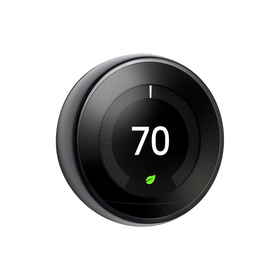
Increase Home Efficiency with these Home Automation Tips
Last Updated: Mar 17, 2025Designing a healthy, energy-efficient, and low-impact home is often considered the work of architects and building contractors. However, how the house is inhabited will be the main determining factor of how sustainable it is. Homes that incorporate a sound building envelope, triple-pane windows, a heat pump, high-efficiency insulation, and other elements designed to increase the thermal performance will offer the opportunity to reduce the carbon emissions of a home radically. The operational sustainability of the house, on the other hand, refers to how homeowners behave and take advantage of those sustainability features. Leaving a window open during the middle of winter, for example, will compromise the energy efficiency of even the best Passive House.
Home automation products can make it easier for homeowners to benefit from the sustainability features designed into the buildings they inhabit. Below, we take an in-depth look at some of the best advances in home automation and how these can help improve your home's energy efficiency and thermal performance.
Table of Contents
- What is Home Automation?
- How Does Home Automation Contribute to the Sustainable Home?
- How Can Automated Blinds Save Energy?
- How Does Ceiling Fan Automation Improve Home Comfort?
- How Can Smart Vents Improve Energy Efficiency?
- How Does Hot Water Heating Automation Save Energy?

What is Home Automation?
Home automation refers to the use of connected systems to manage and control certain functions in your home. In the simplest of cases, home automation can refer to isolated programmable devices such as a smart thermostat that controls the temperature inside your house. As automation technology and the Internet of Things advances, home automation is more likely to allow homeowners to remotely control the vast majority of home functions of their home.
Home automation systems are routinely connected to a smartphone or another mobile device. This connection allows people to control what goes on in their homes even when they're at work or away on vacation. Today, home automation systems work with a wide range of appliances, electrical outlets, switches, heating and cooling systems, sprinkler systems, windows and blinds, doors, locks, surveillance cameras, smoke detectors, and much more.
As these technologies have progressed, the "smart" home is increasingly affordable. This increased affordability is due to the cost-effectiveness of the home automation systems themselves and the energy savings that these technologies can offer.

How Does Home Automation Contribute to the Sustainable Home?
A home automation system can allow you to monitor the temperature outside your home and adjust your thermostat accordingly. Simultaneously it can set timers that will open and close your window shades to either passively cool or heat your home. These steps can go a long way in helping to reduce your monthly heating and cooling expenses.
The smart home with a complete array of home automation technologies allows these different systems to communicate. For example, it is entirely possible to program your home automation systems to close the blinds when the temperature registered by your thermostat reaches a certain threshold. Through configuring a variety of home operational actions to happen regularly throughout the day and the seasons of the year, homeowners can take full advantage of the sustainability features of their homes.

How Can Automated Blinds Save Energy?
An architect can design your home to capture and store the sun's heat through passive solar design. However, suppose you have heavy blinds or curtains over those windows to offer some needed privacy at night. In that case, you will significantly reduce your home's passive solar heating capacity if you forget to open the blinds before rushing out the door to work in the morning.
MySmartBlinds is one company offering an automation kit that will allow you to modify your existing window blinds to increase your energy savings. This automation kit can work with your smart home system or can operate independently. The app allows you to view and control all of the rooms in your home and decide between preferred temperature settings. You can also set daily and weekly schedules and use a sun-tracking feature to maintain similar light levels as the season's change. With prices starting at $270, these smart blinds are a helpful addition to an automated home. They will pay for themselves through reduced energy bills and don't require you to purchase a separate set of blinds. For more options, see Rise's article on Automated Window Shades.

How Does Ceiling Fan Automation Improve Home Comfort?
There is nothing worse than returning after a long trip to a home that is stuffy due to poor ventilation. Automated fans could help you avoid this hassle with the ability to program ceiling fans. When placed in strategic areas of the home, you can set them to automatically turn on and off at specific times during the day or when temperatures rise to a certain level. The smart fans offered by Hunter Fan even have sensors that will automatically turn on the light bulb on your ceiling fan when movement is detected.

Finding the right architect and construction crew to build you a sustainable home or do a major energy retrofit on an existing home is only the first part of living in a home that cares for your health, wealth, and the planet. Learning the art of living sustainably means discovering how to "use" your home to maximize the energy efficiency, indoor air quality, and environmental features it contains. Home automation systems can help you do just that.
Tobias Roberts
Tobias runs an agroecology farm and a natural building collective in the mountains of El Salvador. He specializes in earthen construction methods and uses permaculture design methods to integrate structures into the sustainability of the landscape.












